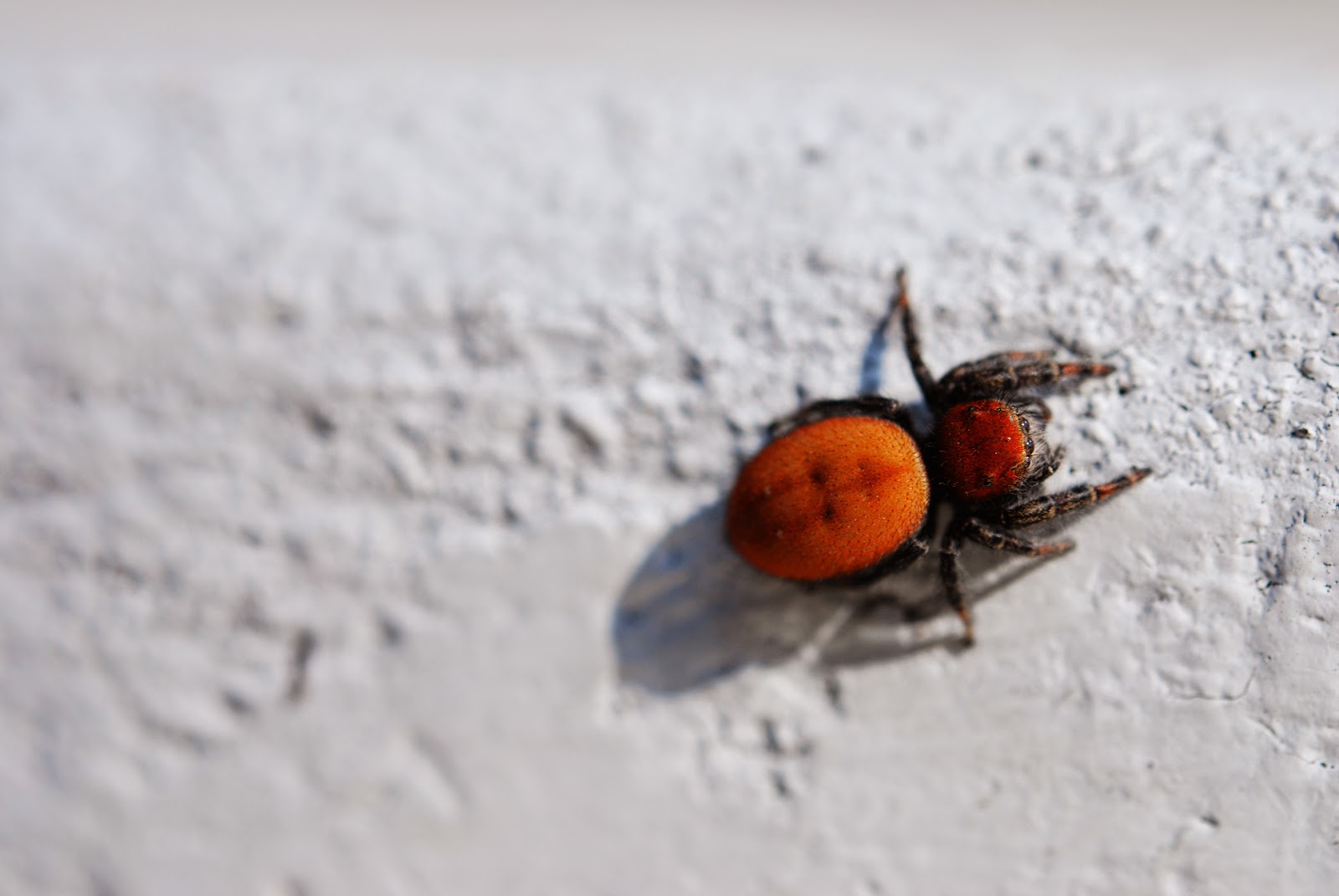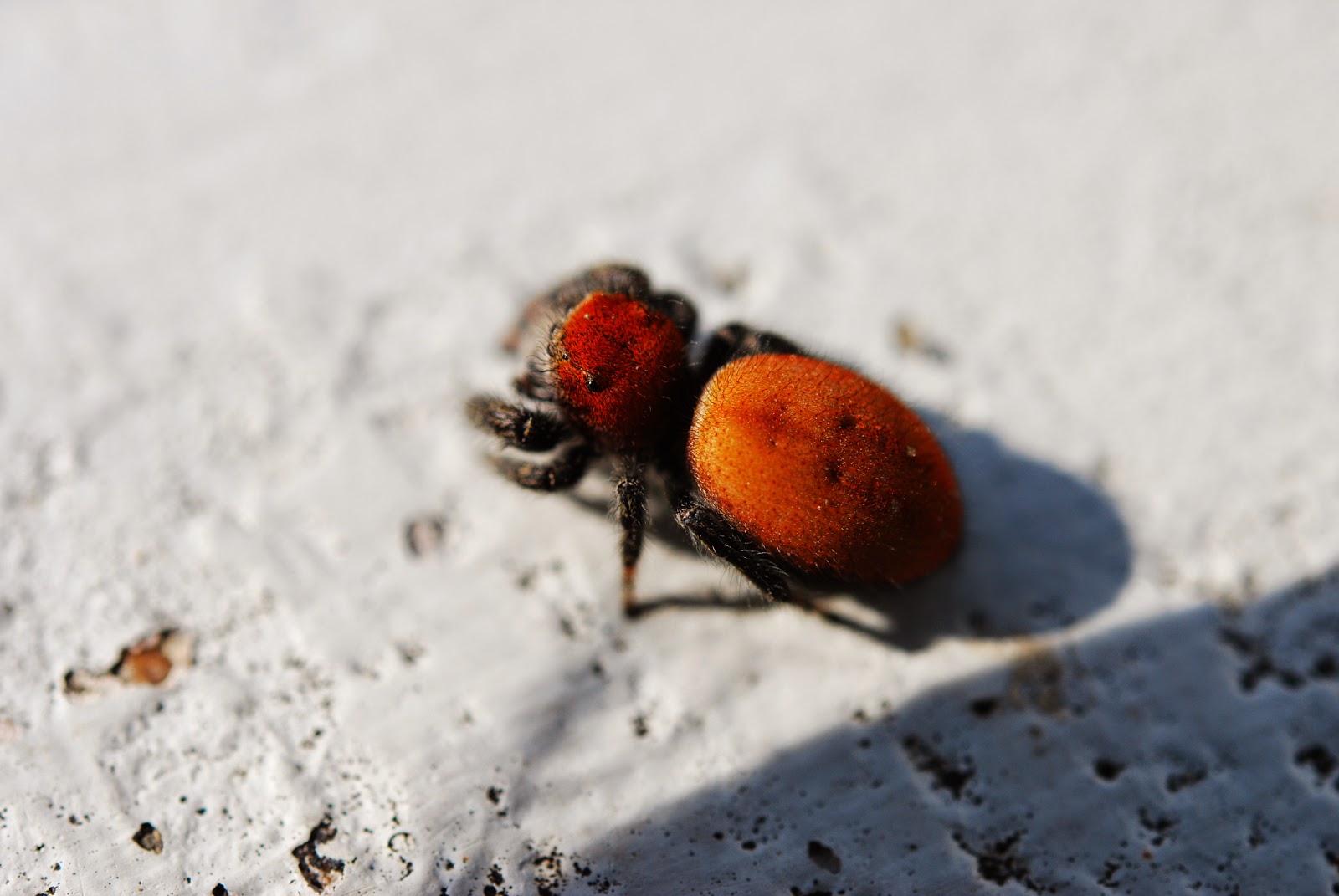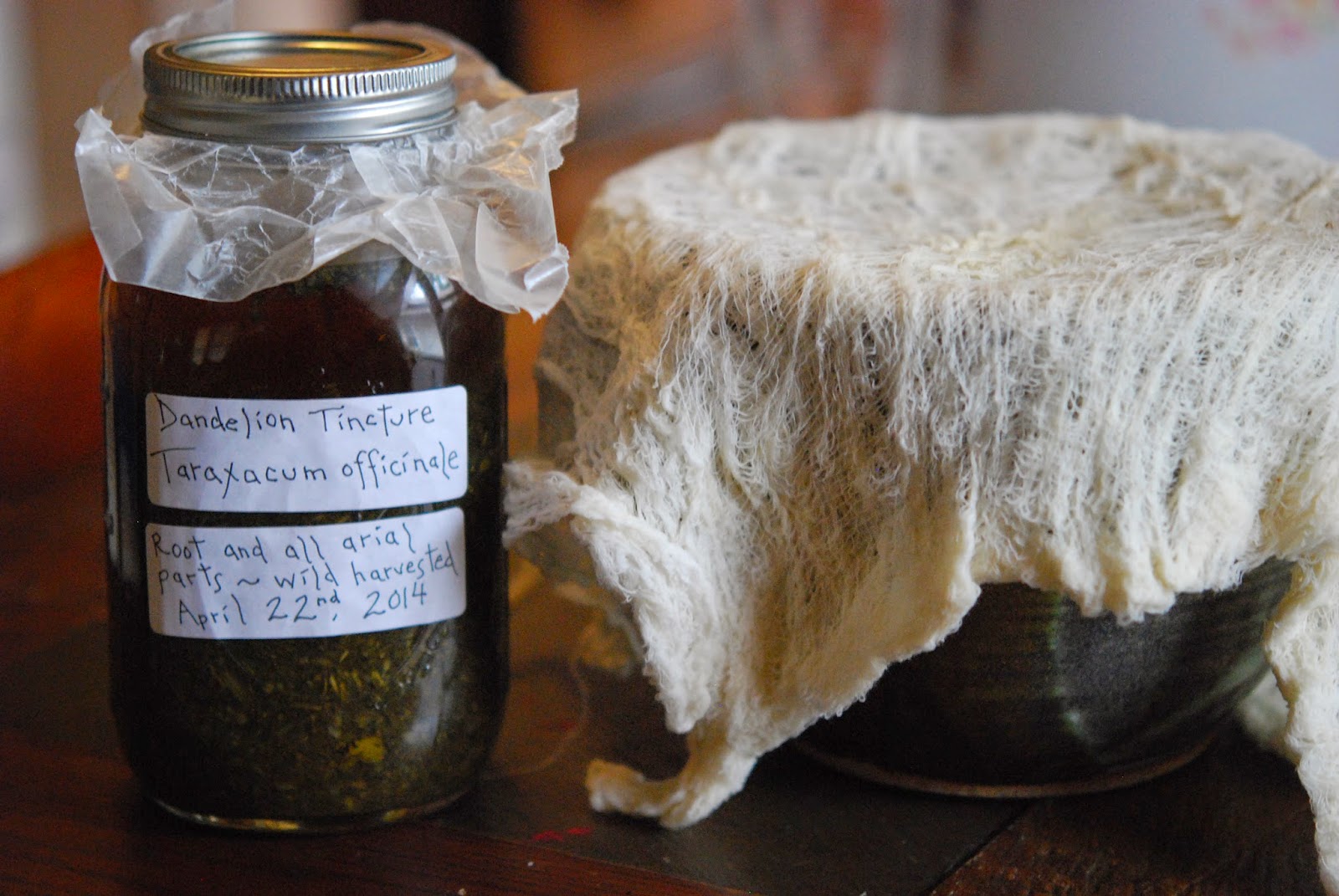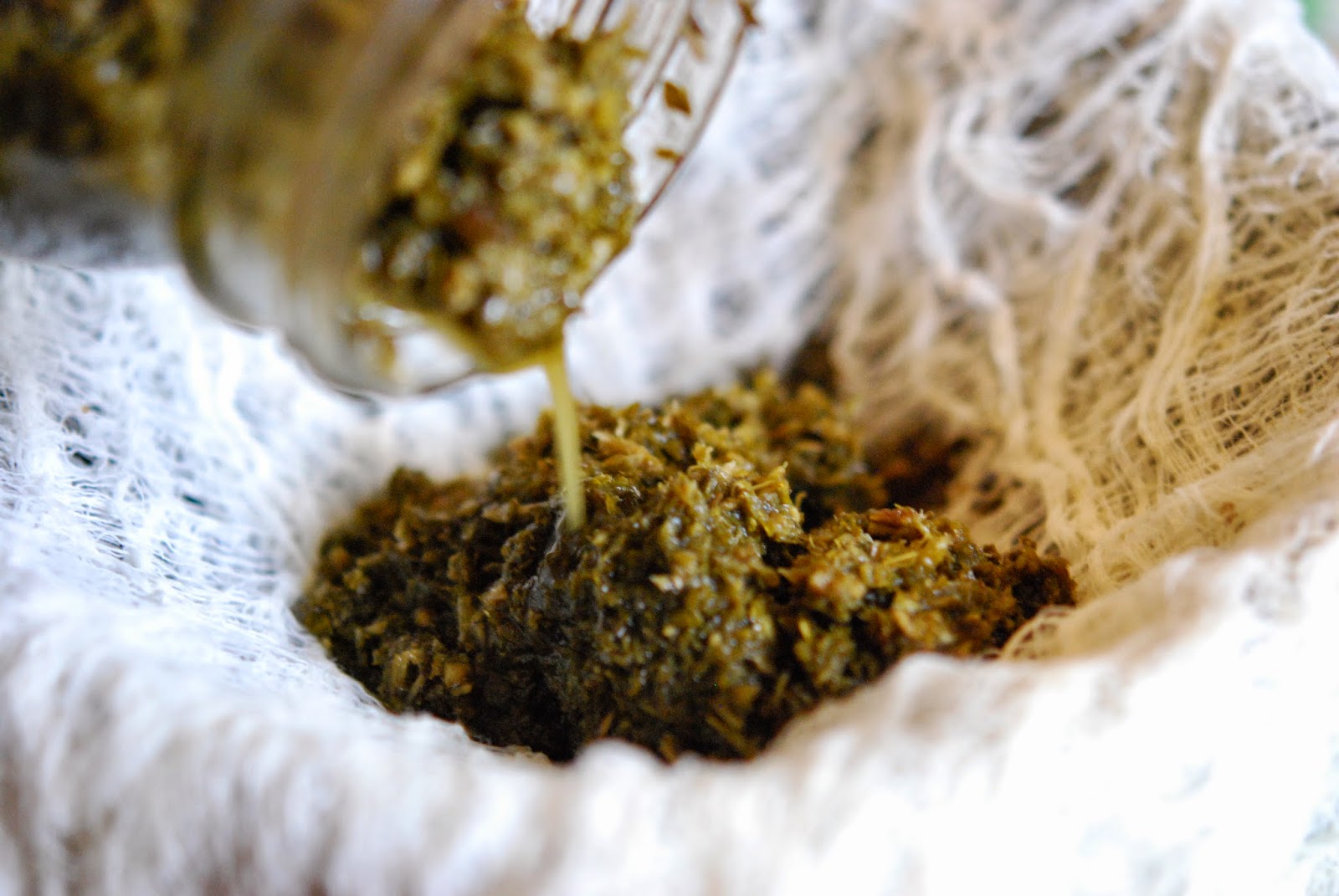The dandelion is one of my favorite, favorite plants. Not delicious, not particularly beautiful. But I find it so very admirable for both its undeniable usefulness, and its remarkable tenacity.
I want to be just like the dandelion. Firm. Steadfast. Stubbornly pursuing its goal of conquering the world, improving the soil, and providing medicine to all those inclined to find it.
Every spring, I gather the dandelions that pop up in and around my garden, and make a dandelion tincture. This is really very simple, and it has benefitted me greatly when I remember to take it. The dandelion is very bitter, and very good for digestion. I have always struggled with my digestive system in general. Usually this involved me heavily abusing my guts while they cried out pitifully for an end to the corn syrup and manicotti, and retaliated with stomachaches, gas, and eventually, the destruction of my gallbladder.
Now, just so we're all on the same page. I'm not a doctor, or an herbalist, or a TCM expert, or any other kind of expert. I just know what has helped me personally. Dandelion is very good at encouraging the movement of bile, which can be very helpful if you struggle with constipation or sluggish digestion in general. Because of my gallbladder troubles, I know that I have certain challenges to face with my liver as well. Dandelion is excellent for both the liver and kidneys, and always, in my experience, encourages well-formed and regular bowel movements.
Didn't that sentence just make it sound so much more lovely than it is?
"Well-formed and regular". Doesn't everybody want to be well-formed and regular? I know I do.
I'm sorry for talking about poop on my blog, y'all. It had to happen. I know some people have unresolved issues with poop. Perhaps there is a hidden trauma in your life that causes you to cringe involuntarily when you hear words like "feces", "manure", or "guano". My sincere apologies to everyone who hates poop (
I'm sorry, Tim. Really!). I'm just going to say it a few more times to get it out of my system. POOP POOP POOPIDY POOOOOP POOP!
I have three boys. There is so much poop, and so much talk of poop in my life that it doesn't really phase me. I get to hear about all the different sizes, shapes, and personalities of my kids' poop every day. I also get to hear the name "Mr. Poop Butt" applied to myself, my grandmother, and pretty much everybody else we come in contact with at least a couple of times a week.
Anyway. Enough of that. Dandelion will help you poop. SO, if you have trouble pooping, just make this tincture and you will be able to have awesome poops every day without even thinking about it. And it's way easier than eating a dandelion salad every day, that's for sure.
First, gather some dandelions that have hopefully not been sprayed with chemicals, or peed on by the neighbor's dog (smelling them first helps to determine this). Try to get a few good roots among the leaves and flowers. Leaves and flowers are great, but the roots are seriously hardcore. This will be extremely evident when you try to extract them. They don't really like coming out of the ground.
Next, wash your dandelions to rid them of all excess dirt and creepy crawlies (there are a lot of places to hide on a dandelion, so try to be thorough! it helps if you have one of those sprayer thingies on your sink, as well as a vegetable scrubber for the roots).
Next, every bit of dandelion must be chopped into teensy, tiny pieces. You can do this by hand, which introduces what some have called "the human element" to your work. If you're in a good mood, and you have a lot of patience, and a lot of time, and you really want to feel that extra spark of productivity in your life, I absolutely recommend chopping by hand. There is something so wonderfully visceral about it.
If you are in a bad mood, or a stressed mood, or anything other than a fabulously bright and cheery mood, or if you suffer from bouts of extreme impatience, I recommend you leave that sort of human element out, and opt for the food processor. Instant gratification can be wonderful too. ;)
I have used both methods, and both have made good tinctures, so have at it with whatever you prefer!
After the herbs are all lovely and fragmented, transfer them to an available (clean) mason jar. Make sure that your jar is big enough, and that the plant isn't being packed in like brown sugar. The plant bits should have room to move and swirl around once you've added the vodka.
Which brings us to the next step...
Get yourself some good quality 80-100 proof vodka. If you can find and afford organic, great! If you can't, well...then you'll be like me and you can stare uncertainly at shelves and shelves of vodka until you grab one at random and pray that it wasn't made from GMO corn.
Pour the vodka over the dandelion until you have at least 1 inch of vodka above the herbs. Next, get a small piece of wax paper to put atop the jar, and put the lid tightly on top of that.
Now comes the fun part. It is beneficial to shake your tincture vigorously a couple of times a day. This encourages the extraction of awesome stuffs by the vodka, and speeds up the process in general. It is not required, but it is fun. After your tincture has been shaken, store it in a cool, dark cupboard for probably 3-6 weeks (honestly I can't remember the recommended time...my last tincture sat for probably 6 months, because I
meant to do it that way forgot about it).
Once the 6 weeks are up, you need to strain your tincture and transfer it to an airtight bottle (preferably one that pours well). You can use a floursack towel for straining, or a nutmilk bag or cheesecloth or an old tshirt or whatever. Personally I think the floursack towel works best; I somewhat regretted using cheesecloth this time around.
Squeeze the marc (all the leftover plant bits) until you get every possible bit of goodness out of them.
Bottle the tincture (a simple
flip-top bottle would work nicely), transfer labels (always label things, you guys. It's important), and you're done!
A good beginning dosage for an adult might be 30-60 drops 2-3 times a day. I estimate that 30 drops is around 1/4 teaspoon. I always mix mine with some water, because man...80-100 proof will burn your nosehairs out. Remember to always be cautious with dosages when trying something new. Dandelion is regarded as a fairly safe herb for nearly everybody, BUT...there are always those few who are sensitive. Start small and slow until you get an idea of what your body can handle.
Everybody is different.
Store your tincture out of direct sunlight, and take daily or as needed! If you're going for daily, I recommend you take a day or a few days or a week off here and there. Balance is key. Find what helps
you.
Happy pooping! ;D
This post has been shared on the Homestead Barn Hop and the HomeAcre Hop!






















































